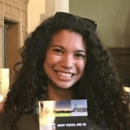Growing up, my hair type and skin color worked together to mark me as an ethnically ambiguous individual. No one knew what I was, so I didn’t either.
My father was Danish. My mother was Filipina. I was a mix. I understood these as facts, but it didn’t feel like a part of my lived experience. Race seemed embedded in genetics. It was a predetermined attribute no different than eye color or dimples. It was a box I checked off on forms; it wasn’t an identity I could possess and take ownership of.
The makeup of half of my school in Queens, New York was Asian like me. They constantly reminded me of how I didn’t fit the schema for what an Asian person should be. My skin was dark and tan, unlike most Chinese, Korean, or Japanese persons. My curls were big and unruly. I didn’t bring any sense of the food, religion, or culture from home. I had a white father.
My ascribed race didn’t match what I identified as, so guessing games ended badly. They would mark me as Latina, black, Pacific Islander, Brazilian or when irate at being corrected, as someone who wasn’t a “real Asian.”
I learned that being Asian was more than DNA and chromosomes. It was a group that I wasn’t entitled to be a part of. It was a piece of me I had to hide as if it had been stolen or didn’t belong to me. I felt like a fraud in every sense of the word.
It was an identity I built out of toxicity. I connected with other Asians through our shared fear of failure. We were bound by the pressure our parents and teachers put on us to succeed and realize the American Dream. It was at the precipice of failure—when we were pitted against one another in academic competition—that I felt the most “Asian.”
It was wholly wrong but felt better than having no relation at all. When I moved to Highlands Ranch, Colorado—a predominantly white neighborhood—I lost all sense of what it meant to be Asian. Without anyone who looked like me, I felt displaced and like an “other.” For months, the culture shock was sharp and unrelenting. In every room, I was hyper-aware of how white everyone else was and how dark it made me. Already a self-conscious individual, my confidence plummeted and anxiety worsened.
Slowly, I grew used to being the darkest person in a room. It stopped phasing me when I was only surrounded by those from Caucasian backgrounds. But the loss of my racial identity wasn’t as easy to reclaim. It wasn’t until recently—in the last six months—that I’ve come to see myself as more than an “other.”
I took classes that redefined what race was and could mean. I talked to people whose experiences reflect my own about why identity matters and is something to be proud of. I opened up in therapy and to friends about moments of hurt that I’ve come to see as racialized in hindsight. I became an activist for others, and it helped me become an activist for myself.
I still struggle to see myself as Asian or Filipina. I don’t know how to fit into segregated spaces with other people of color, and it confuses me when I feel more comfortable at a Black Student Alliance meeting than at a Asian Student Alliance one. I don’t always have the courage to try and connect with other diverse students. The prospect of not being accepted by them is more frightening and hurtful than the idea of a white person shunning me.
I’ve come to love the label “person of color,” though. It makes me feel seen, and it is a group I can belong to without having to face my internalized shame and stigma. It has grown to be an integral part of me. I am proud to call myself a person of color, and I can’t believe those words were once unknown to me.

In too many ways, DU fails people of color and claims ignorance as an excuse for being complicit in micro- and macro-aggressions. But I will always remember my college experience as when I got to know this important part of my identity. It’s a journey of self-discovery that is far from over—I’m excited to see where it takes me.





